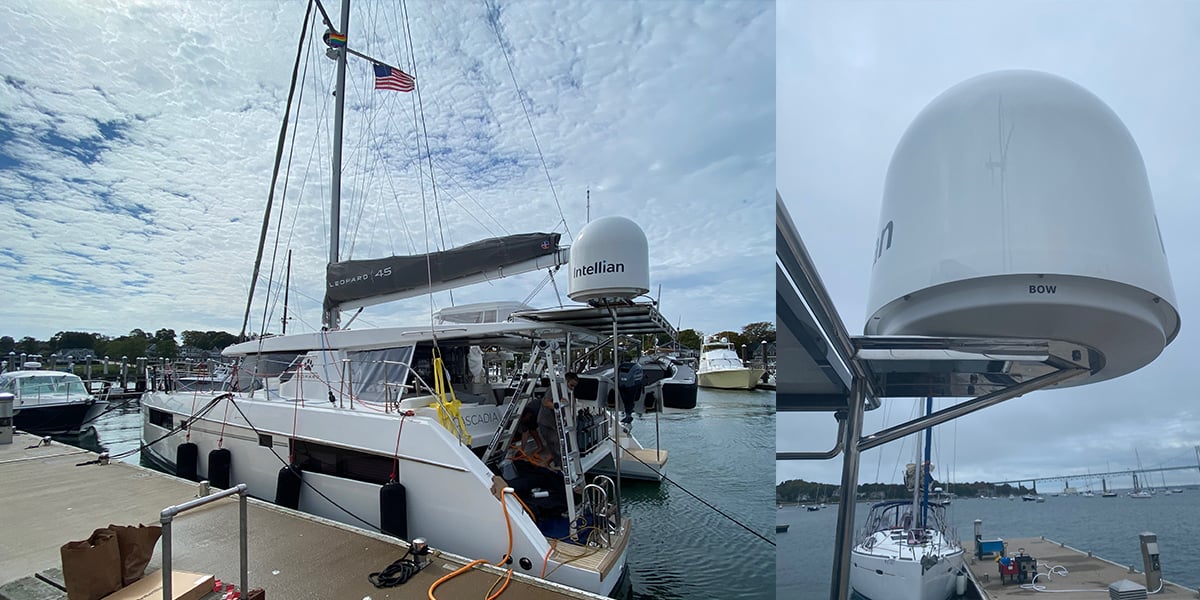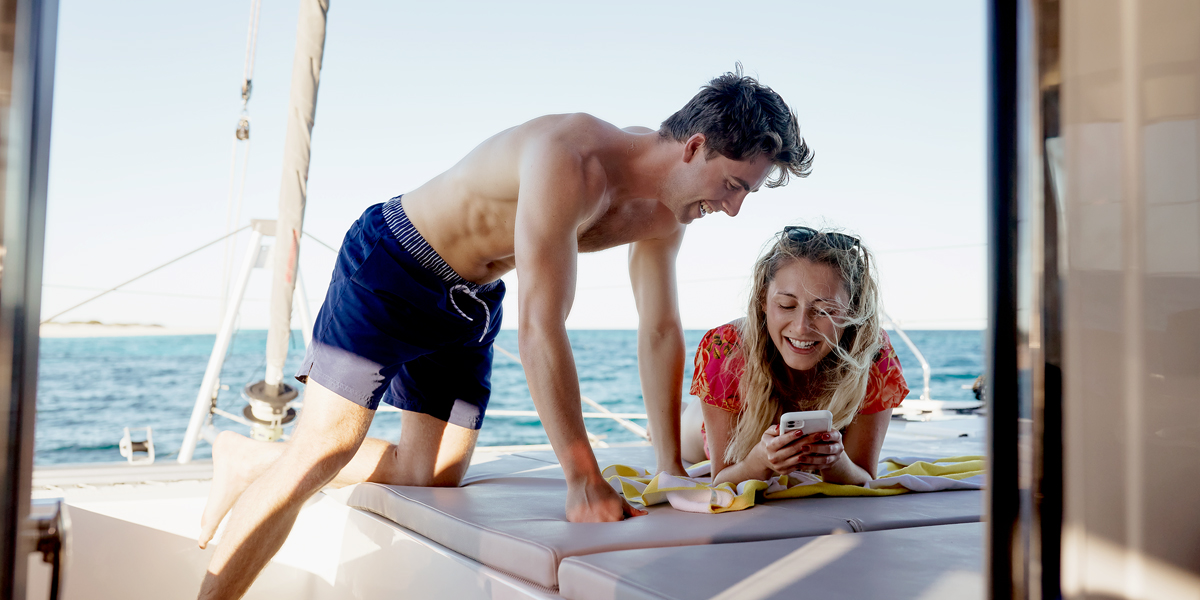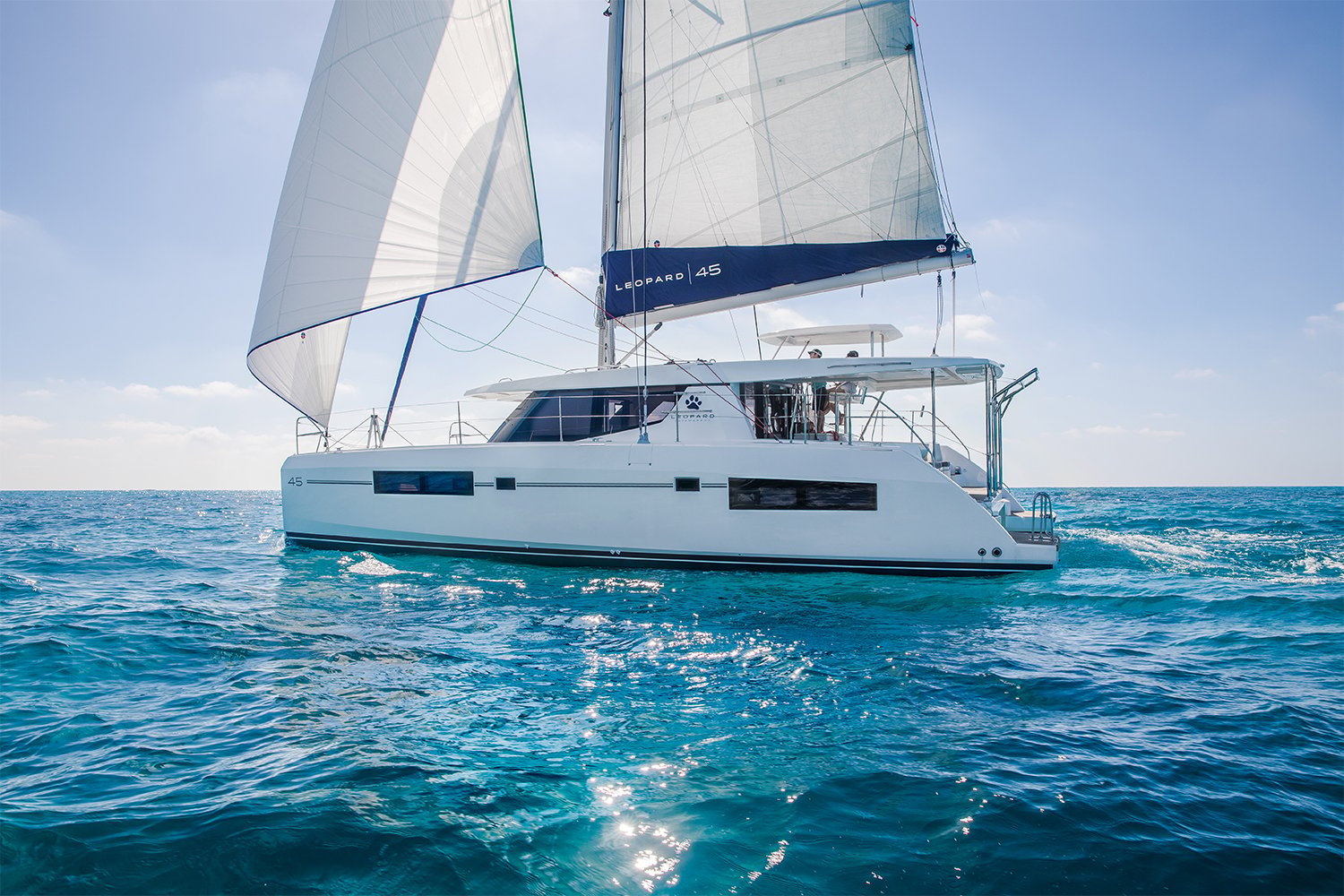Cruising is all about escape, about slipping the surly bonds of daily routine and basking in the solitude of the sea. Except when it isn’t about that.
Our guest blogger, Chris Pendl, works full-time from his catamaran, part-time, in remote places and shares with us the best options for all types of cruisers.
Keeping the connection
Yacht owners who live and work aboard their boats must stay digitally tethered to the world. And even weekend cruisers like to spend the occasional evening streaming a movie or sharing their latest adventures on the phone with friends and family. With the proper mix of communications technology — and enough money — any level of connection is possible from virtually anywhere your adventurer’s heart might take you.
Here’s a look at some options to consider for your particular maritime connectivity situation.
The two most important words- cell and satellite
Cell service and satellite service are the two primary tools for staying digitally connected at sea. The most reliable connectivity solutions incorporate both capabilities.
Cell service is an ideal way to stay digitally tethered while hugging the coastline. With the aid of a standard antenna and booster kit, you might get a signal up to seven or eight miles offshore. Expect to spend $500 to $1000 for a good signal boost rig. Higher-end, more expensive devices can stretch your cell range up to 20 miles.

Keeping your options open
To further ensure reliable cell connectivity, subscribe to more than one provider and use a router that accommodates multiple SIM cards. This setup allows your system to toggle between cell services to provide seamless coverage. A dead spot on your drive home from work is an annoyance. A dead spot at sea is more problematic, especially if you are in a changeable weather situation.
Accessing the internet from green or blue water requires moving to a much higher level of technology and investment — to space, literally, in the form of a satellite connection.
Satellite connectivity usually requires the installation of an onboard dish. Dishes range in size from 20 to 45 inches in diameter, with larger models providing better coverage. Of course, improved coverage comes with a heftier price tag. Depending on size and capability, satellite systems can cost anywhere from about $3,000 to more than $50,000.

The hard part is over, but now what?
Once the hardware is installed, it’s time to think about your data needs. If you’re still all about the solitude of the sea, there are satellite data plans starting as low as $150 that will allow for the basics, such as receiving weather reports, text messaging, sending light emails, and making voice calls. Web browsing capability adds a few hundred dollars to the monthly data tab.
If you need to Zoom into meetings from the bounding main or want to Netflix and chill with your crew, you’re looking at plans with monthly fees of anywhere from $1,000 to well over $2,500.
“We can solve the average user’s data needs for right around $2,000 a month,” says Richard Anderson, owner of Sea-Tech Systems, a maritime communications consulting firm. “But the more specific the need, the higher the cost. Some people spend $10,000 a month on satellite data.”
Communications stacks that include both cell and satellite capabilities can be programmed to help manage your data costs by identifying the best system to use for the task at hand.
Decisions, decisions
The good news for those seeking connectivity at sea is that the configuration options are endless and customizable (with some exciting satellite technology on the horizon). The bad news is that the options are endless and customizable. If this all seems a little daunting — and it is — consider working with a marine communications consultant to identify your connectivity needs and the best way to meet them.
Then, all you have to decide is when you want to be digitally available and when you don’t.


